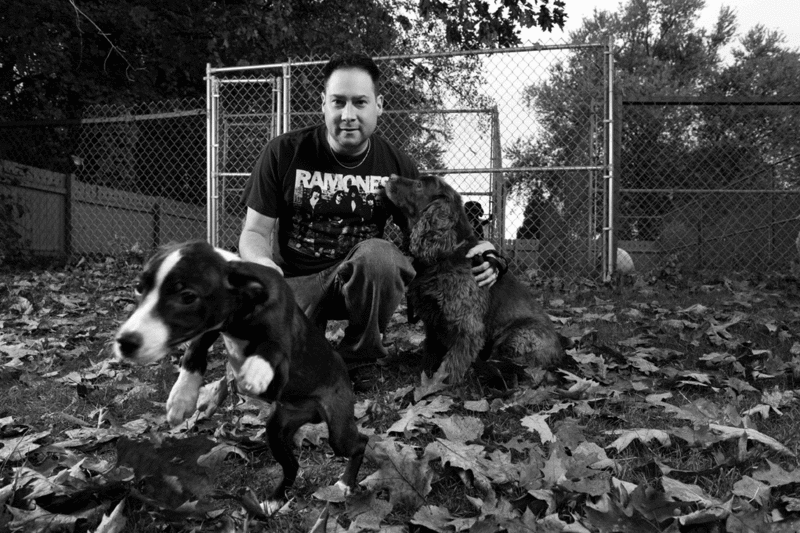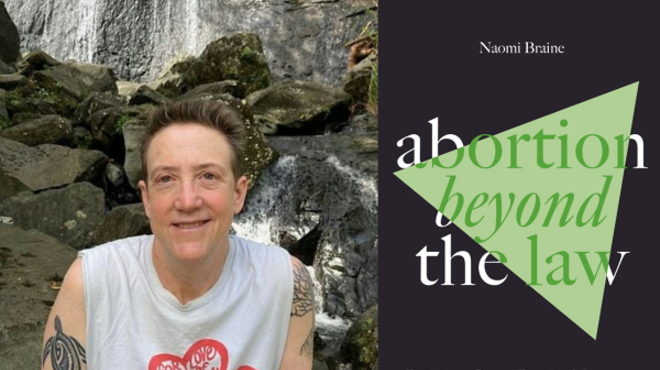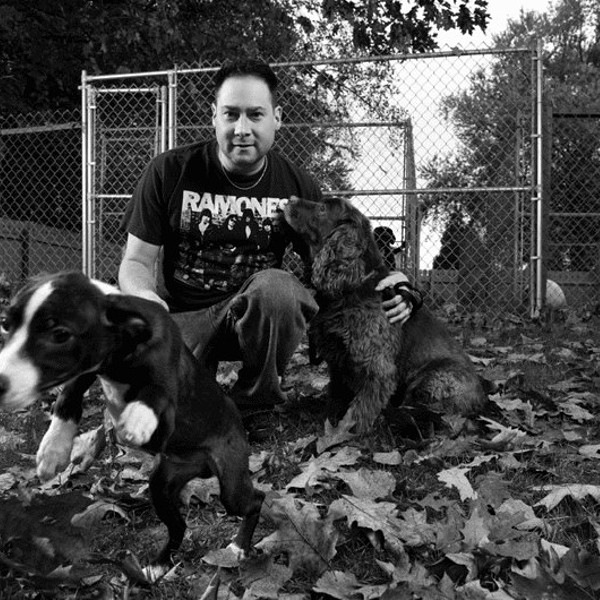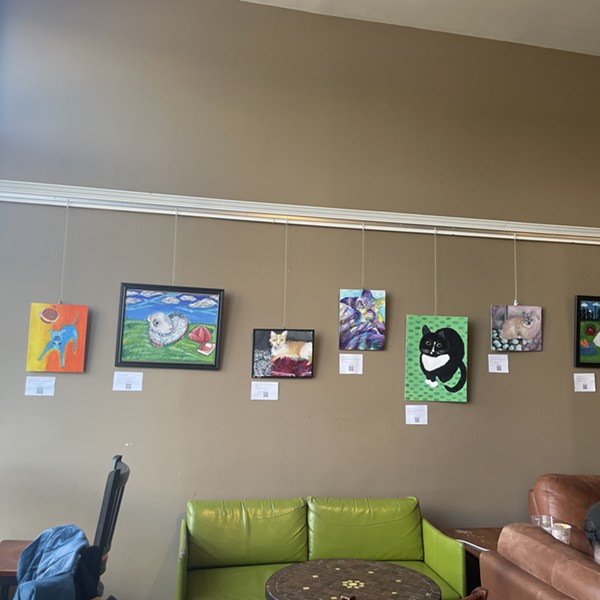In 1984, a young activist named Brian Shapiro brought President Reagan to a graceless halt in the middle of a speech in Hackensack, New Jersey. He and other members of the punk band Crass, were chanting lyrics from one of the group’s songs: “Fight war, not wars.” Ten years later, Shapiro came to Woodstock hoping to better engage himself in animal rights, social justice, and environmental issues. “If there ever was a right move,” he says, “I made that right move in coming up here.” Among other pursuits, Shapiro has hosted a cable access television show, sued the federal government over its chosen location (wetlands, floodplain) for the Woodstock Post Office, worked for the Kingston Library, and taught preschool. In September, the county legislator (D-Woodstock) was tapped for the executive director position at the Ulster County SPCA, where he had previously volunteered. From cats to cockatiels, the UCSPCA currently houses roughly 200 animals, the majority of whom await adoption.
On a recent afternoon at the no-kill shelter, after showing off the enthusiasm of a quartet of bouncing Labrador puppies and moderating a brief dispute over alphahood in one of the cat rooms, Shapiro pauses in front of what used to be a giant freezer for euthanized animals and explains his plans for creating more usable space in the facility. He also hopes to build improved partnerships with other sanctuaries and humane associations so that he can accommodate his furry clients as well as possible; it is the first time in at least four years that the SPCA will be led by someone with advocacy experience.
What kind of attitude do you need to wear so many hats with such ease?
I think it’s just how I was raised. I had parents who were products of the Sixties, and I myself am a Seventies kid, so we had a specific understanding about the importance of being active in the community. I grew up with a very strong sense of DIY, “do-it-yourself,” whether that meant putting together your own fanzine with your thoughts on music or artwork on sloppily Xeroxed pieces of paper, or learning three chords on a guitar and getting some people with weird haircuts together to start a band—it was all about DIY. I used to be an illustrator, a disc jockey, and a bass player; I continue to be a very creative and artistic person, but one of the challenges of being so involved in the community is that I have to find— through working with the environment, animals, ethics, and public service—outlets for things like creativity and a sense of humor, because literally every moment is accounted for. I used to argue about the laws, now I’m helping to create and change them; I used to argue about animal cruelty, now I have the tools to prevent it. But I’m still mad that I can’t play in a band anymore. I was in some good bands.
In addition to the animals available for adoption, the SPCA also cares for animals that the agency has seized through cruelty cases, right?
Yellow tags on kennels or cages indicate that a humane law case pertaining to that animal is still pending, and that it is not adoptable for that reason. Neglect and cruelty cases are why the SPCA has humane law officers. But once you just make that arrest, or issue that ticket, it doesn’t just stop there. The evidence is not just a pound of cocaine in a locker somewhere—evidence in humane law cases is in living, feeling creatures. We have to care for these animals. They can’t just sit in a cold, dark room. We have to provide sustenance, medical care, housing, and recreation for these animals. These are legal matters, criminal matters being prosecuted by the district attorney’s office. And it’s a staggering cost, when you really think about it. Find me another case where some private, not-for-profit agency has to pay for housing and maintaining criminal evidence. I’m doing the best I can, with my experience in the courts, to help expedite these matters with the prevention of cruelty to animals in mind, to try to find justice and the best solution for them.
What’s your next big project?
One of the things I have specific plans for is to have all of these agencies [Animal Emergency Fund, Animal Welfare Adoption Network, and individual volunteers] work together. There’s a population explosion. The animals don’t care what agency we’re from. In Woodstock, we’ve set up a trap/neuter/release fund, which was enough to buy some traps [for feral cats]. We had active volunteers working with an animal control officer there. I’ve also been meeting with other rescue groups and clubs—I’m hoping that we can get enough traps, training, and volunteers throughout the county that, if something’s happening in Gardiner or Shandaken, we have the means to address it.
What does an animal lover eat for dinner?
Marinated tofu with homemade vegetable stock, rice pilaf, and kale. The trick to tofu is that you need to slice it thin, cook it at a very low temperature, and turn it continually—that way it gets a firm, crispy texture. I also recommend two awesome vegan cookbooks, Veganomicon and Skinny Bitch in the Kitch.
















